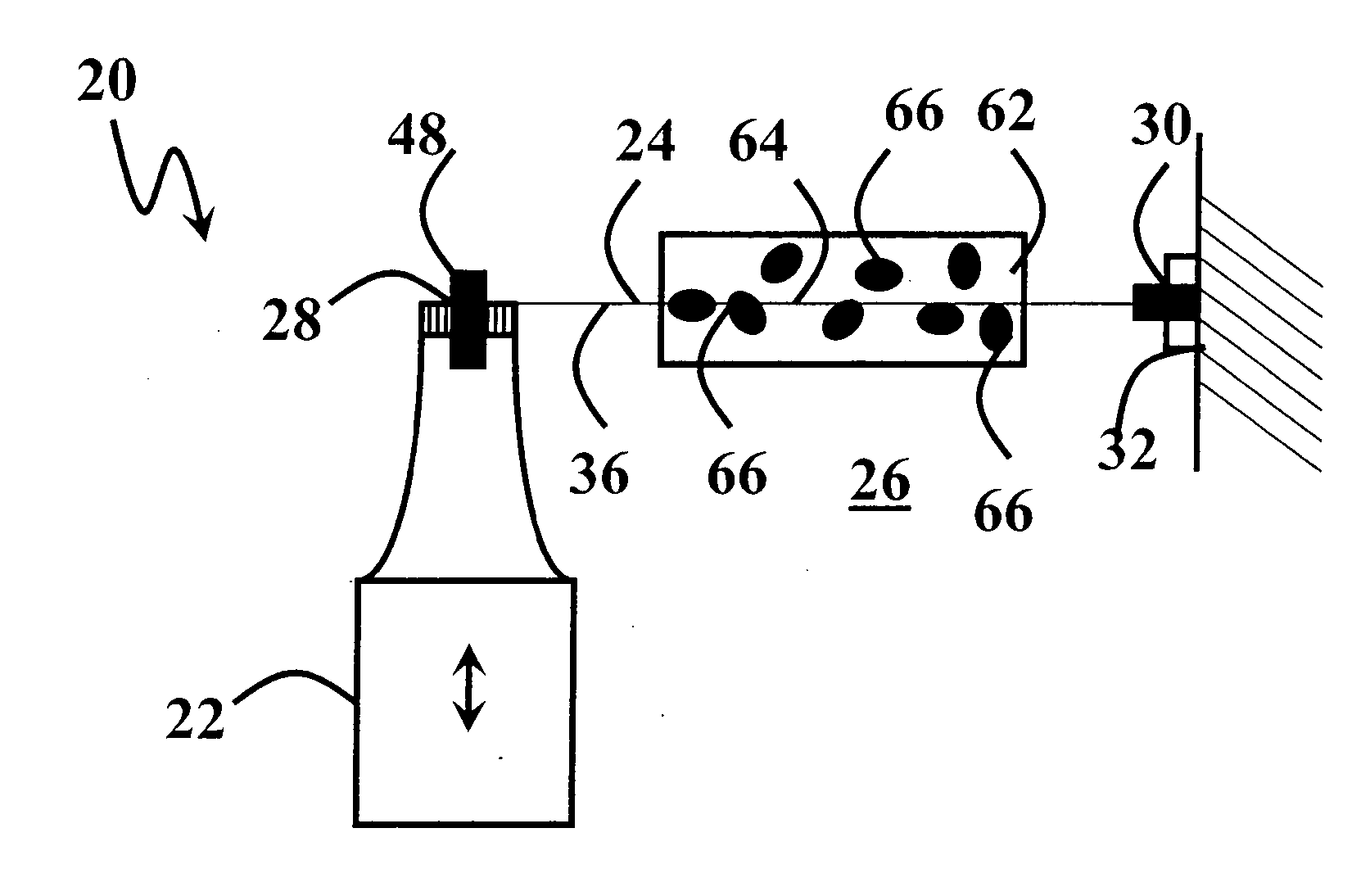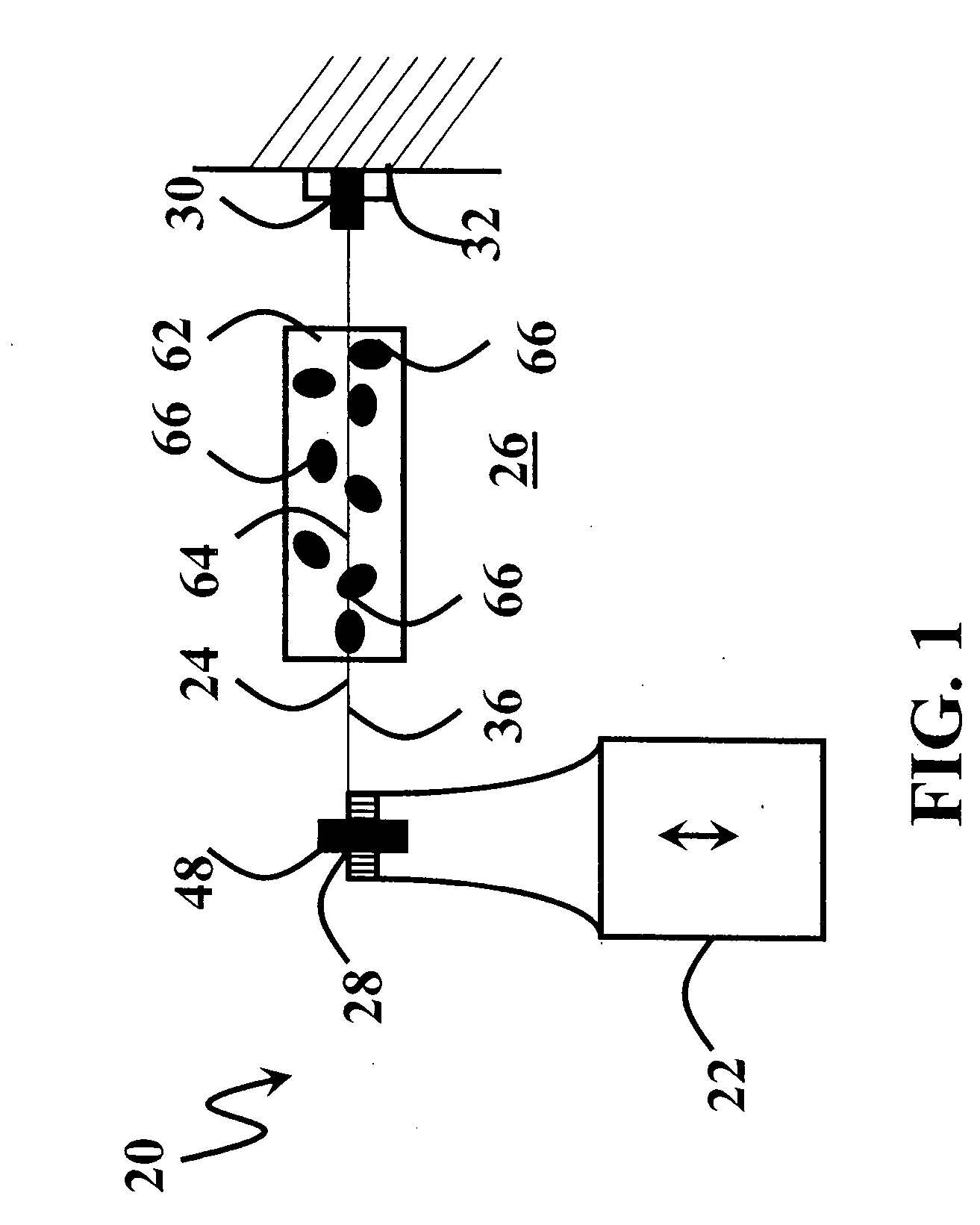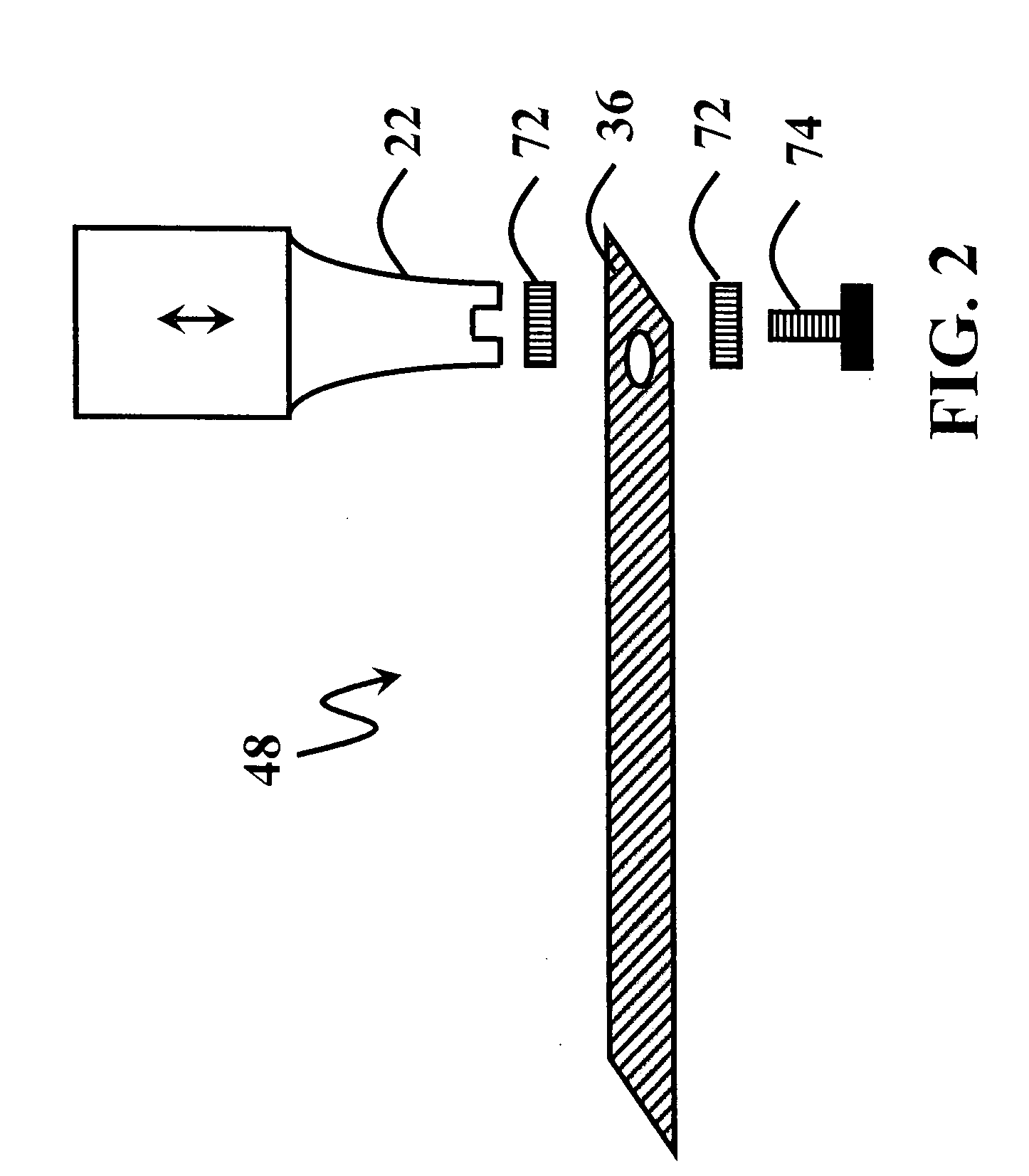Apparatus and method for ultrasonic cutting
a cutting apparatus and ultrasonic technology, applied in the field of cutting products, can solve the problems of many new applications face the perceived high cost of ultrasonic components, and the length of the horn is also significantly limited, so as to achieve less expensive, less expensive, and easy replacement of blades.
- Summary
- Abstract
- Description
- Claims
- Application Information
AI Technical Summary
Benefits of technology
Problems solved by technology
Method used
Image
Examples
Embodiment Construction
[0036]FIG. 1 shows a sectional view of apparatus 20 for cutting product 62 according to one preferred embodiment of this invention. Product 62 can include materials from various industries such as, for example, food, converting or any other industry with a need to cut, slice 64, slit, score, portion or otherwise modify product 62. Typically food items can include candies, breads, cakes, snacks, wafers 68, cookies, dough, pasta, chewing gum, ice cream, marshmallow, cheese and / or any other suitable material. Product 62 can include fillings such as creams, jellies and the like. Product 62 can also include inclusions 66 such as candied fruit, nuts, chocolate and the like. Product 62 can be of any required dimension or size to facilitate manufacture or end use requirements. Miniature sizes of product 62 can be manufactured. Product 62 from other industries may include pet food, paper, wax, foam, plastic and / or other suitable materials.
[0037] Apparatus 20 includes at least one ultrasonic...
PUM
| Property | Measurement | Unit |
|---|---|---|
| Length | aaaaa | aaaaa |
| Length | aaaaa | aaaaa |
| Length | aaaaa | aaaaa |
Abstract
Description
Claims
Application Information
 Login to View More
Login to View More - R&D
- Intellectual Property
- Life Sciences
- Materials
- Tech Scout
- Unparalleled Data Quality
- Higher Quality Content
- 60% Fewer Hallucinations
Browse by: Latest US Patents, China's latest patents, Technical Efficacy Thesaurus, Application Domain, Technology Topic, Popular Technical Reports.
© 2025 PatSnap. All rights reserved.Legal|Privacy policy|Modern Slavery Act Transparency Statement|Sitemap|About US| Contact US: help@patsnap.com



